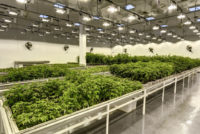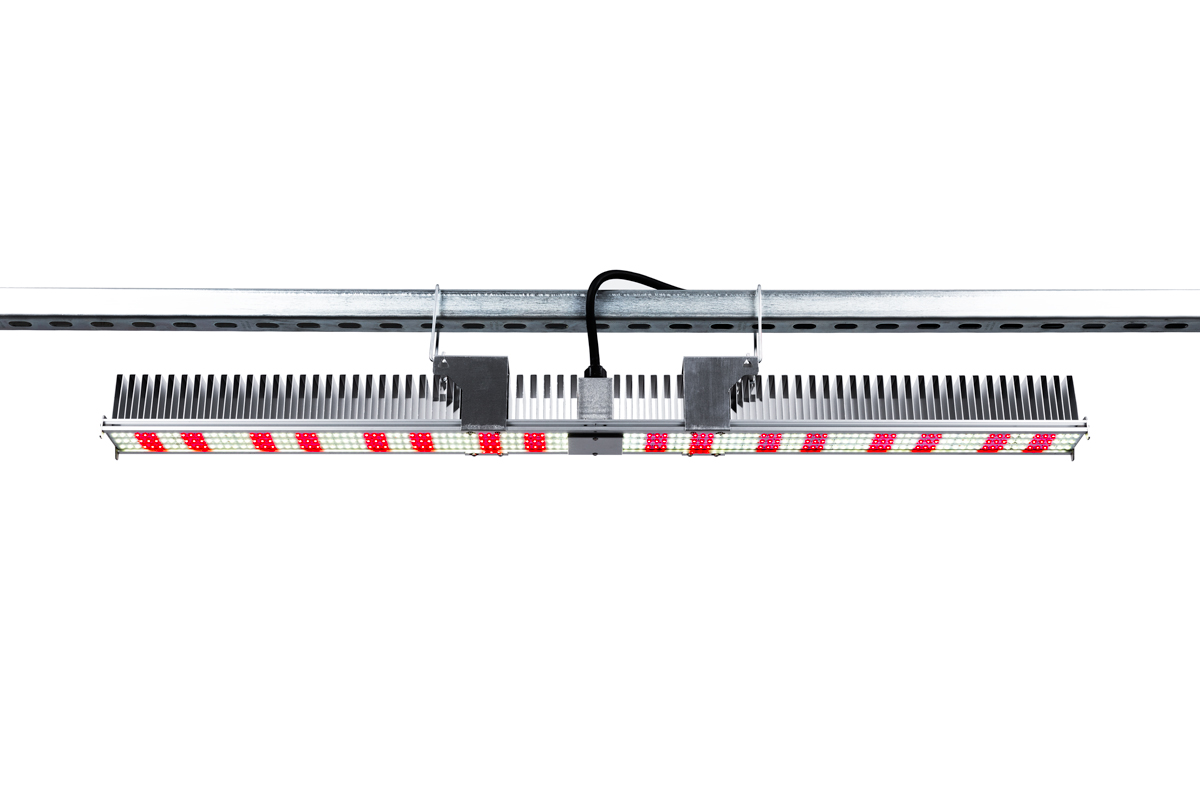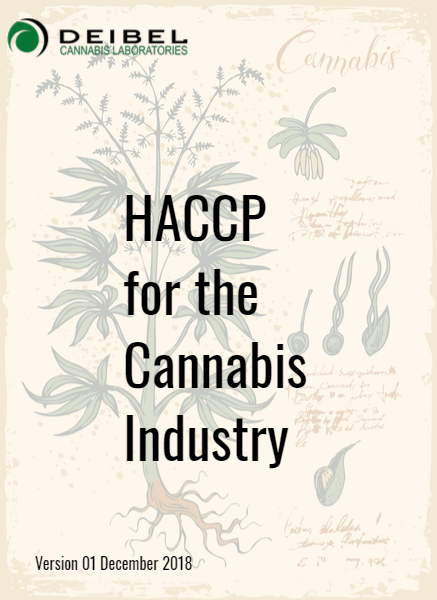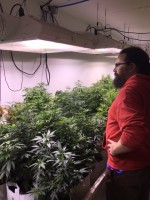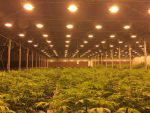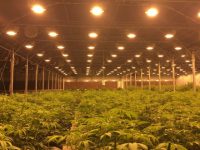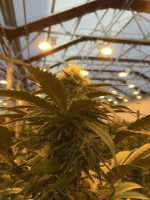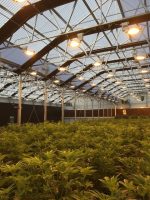In the burgeoning cannabis market, grow facilities are facing more and more competition every day. New indoor cultivation enterprises are often being set up in formerly vacant industrial buildings and commercial spaces, while in other cases, companies are planning and constructing new grow facilities from the ground up. For all these establishments, continually lowering production costs while supplying the highest possible quality in ever-increasing yields is the way forward.
Whether in existing or new structures, concrete floors are ubiquitous throughout the majority of cannabis growing facilities. With the right treatment, these indoor concrete traffic surfaces can greatly contribute to a company achieving its operational objectives. Alternatively, insufficiently protected concrete floors can create annoying and costly barriers to accomplishing company goals.
Challenges in Cannabis Grow Facility Construction
As with any emergent industry, mainstream acceptance and market growth is bringing regulation to cannabis cultivation. Local governments are paying more attention to how cannabis growing facilities are constructed and operated. In addition to the standard business matters of building safety, employee working conditions and tax contributions, elected officials are increasingly under pressure from constituents to analyze the overall effect of grow facilities on their communities at large.
 High consumption of energy for grow room lights and high water usage are just part of the equation. The temperature and humidity needs of a grow facility can be similar to that of an indoor swimming pool environment. While warmth and moisture are ideal for cannabis growth, they also provide the ideal conditions for the growth and proliferation of fungi and other undesirable microorganisms. Therefore, to help preserve plant health in the moist indoor climate, fumigation often comes into play.
High consumption of energy for grow room lights and high water usage are just part of the equation. The temperature and humidity needs of a grow facility can be similar to that of an indoor swimming pool environment. While warmth and moisture are ideal for cannabis growth, they also provide the ideal conditions for the growth and proliferation of fungi and other undesirable microorganisms. Therefore, to help preserve plant health in the moist indoor climate, fumigation often comes into play.
Carbon dioxide (CO2) enrichment of grow room air, a common practice proven to increase crop yields, presents another set of safety and health considerations in dense urban environments.
Adding to these challenges, many cannabis grow facilities are producing plants destined for either pharmacological or nutritional use. This in itself demands scrutiny by regulators for the sake of the consuming public.
As a result, grow room managers and owners must stay informed about the evolution of the industry in terms of local and federal agency regulations concerning their facilities, their overall operation and their products.
Bare Concrete Floors in Grow Rooms
As a foundational construction material, concrete continues to lead the way in commercial and industrial construction. Despite the many advantages of concrete floors, when left unprotected they can present significant challenges specific to cannabis grow rooms.
- Untreated, bare concrete is naturally porous, easily absorbing liquids and environmental moisture. Substances found in grow rooms, such as fertilizers, fungicides and other chemicals, can leach through the porous concrete floor slab into the soil and ground water. Whether organic or synthetic, concentrations of such substances can be highly detrimental to the surrounding environment.
- Whether in an existing or newly constructed facility, it is not uncommon for the under-slab vapor barrier to be compromised during construction. When this occurs, moisture from the soil beneath the floor slab can enter the concrete and move osmotically upward, creating a phenomenon known as Moisture Vapor Transmission (MVT). The resulting moisture and moisture vapor tends to become ever more alkaline as it rises upward through the concrete slab. MVT can result in blistering, bubbles and other damage to floor coverings.
- The warm temperatures, regular watering of plants and high relative humidity maintained within many grow rooms can contribute to a weakening of the structural integrity of unprotected grow room slabs.
- Within the confined space of a grow room, the warm, moist air invites microbe proliferation. Food and pharmaceutical plants are high on the priority list when it comes to facility hygiene levels, as demanded by code.
Public health guidelines for cannabis cultivation facilities in various parts of the country are increasingly mirroring those of food processing. Typical requirements include having smooth, durable, non-absorbent floor surfaces that are easily cleaned and in good repair, possessing proper floor slope towards a sanitary floor drain, with no puddling, as well as an integral floor-to-wall cove base. These directives cannot be met with bare concrete alone.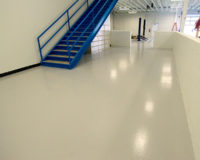
Optimal Grow Room Flooring Performance
In some locations, cannabis growing facilities are already subject to strict building codes and regulations. This will no doubt be spreading to other regions in the near future. For example, the Public Health Agency of Los Angeles County publishes construction guidelines to ensure cannabis facility floors meet standards mirroring the food processing and pharmaceutical manufacturing industries, where sanitation, facility hygiene and safety are paramount. In these types of facilities, bare, unprotected concrete floor slabs are not allowed as a general rule, due to the material’s innate porosity and absorbency.
Flooring in grow rooms, like in their food and pharma industry counterparts, should optimally:
- Provide a monolithic and virtually seamless surface to help eliminate crevices, grout lines and other dark, damp locations where soil and pathogens tend to hide
- Be impervious and non-porous, providing a surface that can isolate toxic materials on the surface for proper clean-up where needed
- Enable correction or improvement of the floor slope for proper drainage, with no low spots to help avoid puddling
- Be installed with integral floor-to-wall cove options for easier wash-down and sanitizing
- Have the strength and thermal shock resistance, plus the tenacious bond, to undergo steam-cleaning and/or hot power washing, where needed
- Enable seamless, continuous surface installation over concrete curbs and containment areas
- Offer antimicrobial options for highly sensitive locations
- Demonstrate high compressive strength and impact resistance for durability under heavy loads
- Display excellent abrasion resistance, allowing the system to perform under grueling daily wear-and-tear
- Present customizable slip-resistance options that can be balanced with easy clean-ability
- Facilitate the use of floor safety markings, such as color-coded traffic and work area designations
- Be formulated with low odor, low-VOC chemistries that meet all EPA and similar regulations
- Be able to contribute LEED Green Building Credits, where desired
- Include options for refurbishing old or damaged concrete surfaces to allow reuse of existing facility resources, as opposed to having to be demolished, thus unnecessarily contributing to landfill waste
- Withstand and perform in continually damp grow room conditions, without degrading
- Be compliant with FDA, USDA, EPA, ADA, OSHA, as well as local regulations and/or guidelines
- Include MVT mitigating solutions where Moisture Vapor Transmission site issues are present
- Provide waterproofing underlayment options for multi-story facilities
- Demonstrate excellent resistance to a broad range of chemicals, fertilizers and extreme pH substances
Finding an affordable floor system with all the above features may seem like a tall order. Luckily, innovative manufacturers now offer cannabis facility flooring that meets sanitation, regulatory compliancy, durability and budgetary needs of growers.
Resinous Flooring Value for Cannabis Facilities
Choosing the right floor solutions for a given cultivation facility may be one of the most important decisions an owner or manager makes. Since floors are present throughout the structure, poor selection and compromised protection of concrete slabs can end up wreaking havoc with profits and yields over time.
 Few facilities can afford the inconvenience and expense of an otherwise unnecessary floor repair or replacement. Having to suddenly move cumbersome plant beds and heavy pots in order to give workers access to the floor area can be headache. In addition, the unscheduled downtime and overall juggling of resources that invariably must take place make a strong case for investing in optimal grow room flooring from the start.
Few facilities can afford the inconvenience and expense of an otherwise unnecessary floor repair or replacement. Having to suddenly move cumbersome plant beds and heavy pots in order to give workers access to the floor area can be headache. In addition, the unscheduled downtime and overall juggling of resources that invariably must take place make a strong case for investing in optimal grow room flooring from the start.
An excellent long-term value, professional-grade resinous floor systems present cannabis growers with a unique set of solutions for cultivation rooms. Not only does this type of flooring offer all the desirable features listed above, but also furnish a host of added benefits to grow room operations, including:
Very High Gloss Finish
- Highly reflective floor surfaces enable light entering the space from overhead to bounce back upward, exposing the underside of leaves to the light and potentially increasing yields
- Exceptionally high gloss floor finishes in light colors help make the most of your existing lighting sources, significantly increasing room illumination
- Achieving greater illumination without adding fixtures helps reduce energy consumption and associated costs
Virtually Seamless Surface
- Fluid-applied resin-based flooring provides an impermeable, monolithic surface that is exceptionally easy to clean and maintain
- The virtually seamless finish of resinous coated floors greatly reduces the number of locations for soil, pathogens and microbes to gather
- Resinous floors, by incorporating integral cove bases to eliminate ninety degree angles, correcting floor slope to eliminate puddling, and allowing for a virtually seamless surface, provide an optimally sanitary flooring solution
Outstanding Moisture Tolerance
- Designed specifically for use in wet industrial environments, cementitious urethane flooring is a top choice for humid grow rooms
- Also called “urethane mortar”, this type of floor can help mitigate certain undesirable site conditions, such as Moisture Vapor Transmission (MVT)
Chemical, Acid and Alkali Resistance
- Whether organic or synthetic, many soil enhancers and substances used to eradicate undesirable fungi and pests can damage concrete and shorten the usable life of foundational slabs
- Protecting concrete slabs with monolithic, non-absorbent and appropriately chemical resistant coating systems allows concrete to perform as designed, for as long as intended
- A proper barrier coating on the floor allows spilled or sprayed substances to be properly cleaned up and disposed of, rather than allowing the liquids to seep through the porous slab, and into the surrounding natural environment
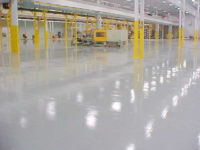
Added Safety
- Resinous coating systems’ slip-resistance is completely customizable at the time of installation, enabling growers to request more traction in pedestrian walkways and less slip-resistance under raised beds.
- Epoxy, urethane and polyaspartic resinous flooring systems accommodate the installation of safety and line markings, as well as varying colors to delineate specific work areas
- The antimicrobial flooring options available from some manufacturers offer further hygiene support in highly sensitive facilities
- Today’s industrial resinous floor coatings from reputable suppliers are very low to zero V.O.C. and compliant with EPA and other environmental regulations
Resinous coating systems provide ideal value to informed growers who require durable, reliable and long-lasting high performance flooring for their facilities.
Support from the Ground Up
From incredible medical advances to high tensile fiber in construction materials, the expanding cannabis industry is bringing exciting opportunities to many areas of the economy. As more and more growers enter the market, so increases the pressure to compete.
By choosing light reflective, seamless and moisture tolerant resinous flooring that meets regulatory guidelines for grow rooms, managers can help reduce their overhead costs on multiple fronts — and get a jump on the competition.










